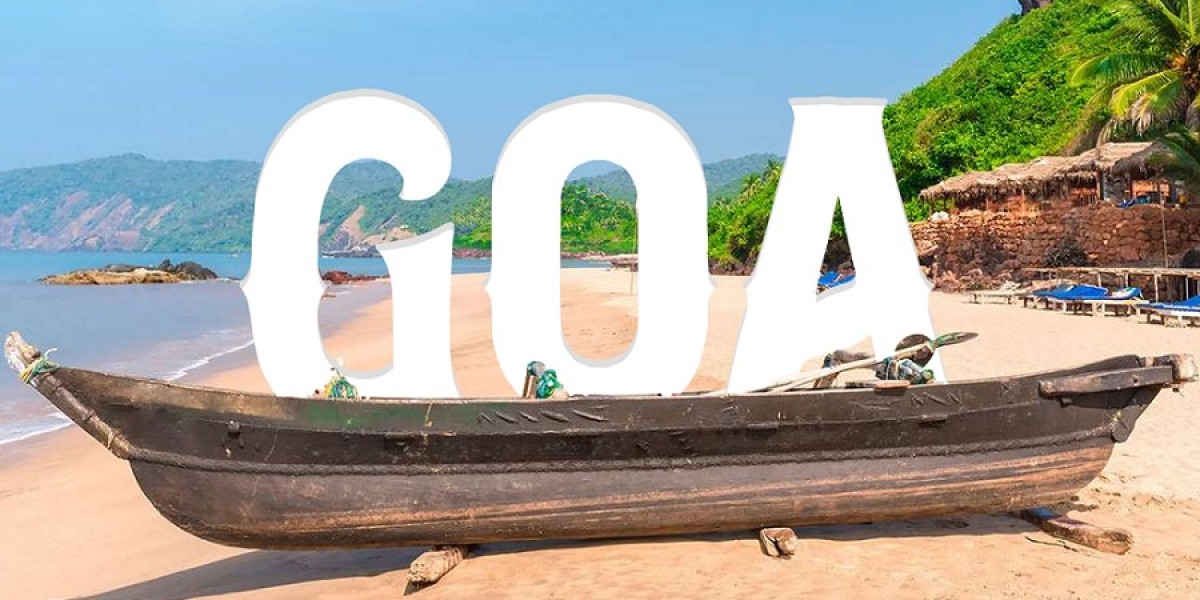Goa, located on the western coast of India, is known for its beautiful beaches, vibrant nightlife, and unique blend of Indian and Portuguese cultures. Whether you're planning a relaxing beach vacation, exploring historical sites, or immersing yourself in the local culture. You should explore Goa Tour Packages while planning a trip.
Here's a guide to navigating the world of Goa:
Best Time to Visit:
Goa has a tropical climate, with hot and humid summers and mild winters. The peak tourist season is from November to February when the weather is pleasant and ideal for beach activities. However, if you prefer fewer crowds, visiting during the off-peak months of March to May or October can be a good option. The winter season in Goa is characterized by mild temperatures, lower humidity, and clear skies. The average temperatures range from 20°C to 30°C (68°F to 86°F), making it comfortable for beach activities and outdoor exploration. During this time, Goa comes alive with vibrant festivals and events. The most famous festival is Christmas, celebrated with great enthusiasm, decorations, and feasts. New Year's Eve parties are also a major highlight, with beachside celebrations and fireworks. Additionally, Goa hosts the Sunburn Festival, a popular electronic music festival, in December. The pleasant weather during winter makes it enjoyable to explore Goa's historical sites, such as the colonial-era churches in Old Goa, forts like Fort Aguada, and the charming streets of Panaji. You can also venture into the wildlife sanctuaries and waterfalls without the discomfort of excessive heat.
The winter months offer ideal conditions for enjoying Goa's beautiful beaches. You can indulge in water sports like parasailing, jet skiing, and banana boat rides. The sea is calmer during this season, making it suitable for swimming and snorkelling as well.
Getting There:
Goa has an international airport, Dabolim Airport (GOI), which is well-connected to major Indian cities and some international destinations. Alternatively, you can also reach Goa by train or bus from neighbouring states. Goa is well-connected by air, rail, and road, offering multiple options for reaching the destination. Here are the various ways to reach Goa:
By Air:
Goa has its own international airport, Dabolim Airport (GOI), located approximately 29 kilometres from Panaji, the state capital. It is well connected to major cities in India as well as some international destinations. Several domestic airlines operate regular flights to and from Goa. From the airport, you can hire a taxi or take a pre-paid taxi to reach your desired destination in Goa.
By Train:
Goa has several railway stations, with the major ones being Madgaon (Margao) and Thivim. These stations are well-connected to major cities across India, including Delhi, Mumbai, Kolkata, Chennai, and Bangalore. Many long-distance trains have regular services to Goa. From the railway station, you can hire a taxi or take a local bus to reach your preferred location in Goa.
By Road:
Goa is connected to neighbouring states by a network of well-maintained roads, making it accessible by road travel. National Highway 66 (previously NH 17) and National Highway 4A (previously NH 4) are the main highways connecting Goa to Mumbai, Pune, and Bangalore. If you are travelling from nearby states like Maharashtra or Karnataka, you can opt for state transport buses, private buses, or even drive your own vehicle to Goa. Many tourists also choose to hire a taxi or use cab services for comfortable road travel.
Choosing the Right Beach:
Goa is famous for its stunning beaches, each with its own unique charm. Some popular beaches include Calangute, Baga, Anjuna, Vagator, and Palolem. Calangute and Baga are known for their vibrant nightlife, while Anjuna and Vagator are popular among backpackers and offer a bohemian atmosphere. Palolem, in the southern part of Goa, is more serene and ideal for relaxation. Here are some popular beaches in Goa to help you make a decision:
Calangute Beach:
Located in North Goa, Calangute is one of the largest and most popular beaches in the state. It offers a vibrant atmosphere with numerous shacks, restaurants, and beachside activities. Calangute is known for its water sports, lively nightlife, and bustling markets.
Baga Beach:
Adjacent to Calangute, Baga Beach is famous for its vibrant nightlife and party scene. It attracts a younger crowd and offers a range of clubs, beach bars, and live music venues. Baga is also known for water sports activities and a lively flea market.
Anjuna Beach:
Anjuna is a popular beach among backpackers and hippies. It has a bohemian and laid-back vibe. Anjuna is famous for its Wednesday flea market, where you can find unique clothing, accessories, and handicrafts. The beach also hosts trance parties and offers a range of beachfront shacks and cafes.
Vagator Beach:
Located near Anjuna, Vagator Beach offers a more relaxed and scenic environment. It has beautiful cliffs overlooking the Arabian Sea and is known for hosting music festivals and parties. Vagator is popular among both partygoers and those seeking a peaceful beach experience.
Palolem Beach:
Situated in South Goa, Palolem is known for its natural beauty and tranquillity. It offers a picturesque setting with palm-fringed shores and calm waters. Palolem is ideal for relaxation, yoga retreats, and enjoying the laid-back vibe. You can also take boat trips to nearby islands and spot dolphins.
Morjim Beach:
Located in North Goa, Morjim is known as "Little Russia" due to the large Russian community residing here. It has a serene and peaceful atmosphere and is famous for being a nesting site for Olive Ridley sea turtles. Morjim is a good choice if you prefer a quieter beach experience.
Exploring Historical Sites:
Goa has a rich history influenced by Portuguese colonization. Visit Old Goa, a UNESCO World Heritage Site, to explore colonial-era churches such as the Basilica of Bom Jesus and Se Cathedral. Don't miss Fort Aguada, a 17th-century Portuguese fort with panoramic views. The Latin Quarter of Fontainhas in Panaji, the state capital, is another must-visit, known for its colorful Portuguese-style houses.
Here are some notable historical sites to explore in Goa:
Basilica of Bom Jesus:
Located in Old Goa, the Basilica of Bom Jesus is a UNESCO World Heritage Site and one of the most important Christian pilgrimage centres in India. The church holds the mortal remains of St. Francis Xavier, a prominent Catholic missionary. The architecture features a combination of Baroque and Corinthian styles.
Se Cathedral:
Adjacent to the Basilica of Bom Jesus, the Se Cathedral is one of the largest churches in Asia and a remarkable example of Portuguese-Gothic architecture. The cathedral is dedicated to St. Catherine and is known for its massive bell, the Golden Bell (Ghantaghar), which is one of the largest in the world.
Church of St. Francis of Assisi:
Situated in Old Goa, this church is a stunning example of Manueline-style architecture with a mix of Renaissance and Gothic influences. It houses beautiful frescoes and intricate woodwork, including a carved screen depicting the life of St. Francis of Assisi.
Fort Aguada:
Located on Sinquerim Beach in North Goa, Fort Aguada is a 17th-century Portuguese fort. It was built to guard against Dutch and Maratha invasions. The fort offers panoramic views of the Arabian Sea and the surrounding landscapes. It also houses a 19th-century lighthouse.
Chapora Fort:
Perched on a hilltop near Vagator Beach, Chapora Fort offers sweeping views of the Arabian Sea and nearby beaches. The fort is known for its ruins and its association with the Bollywood movie "Dil Chahta Hai." It provides a serene setting for visitors to explore and enjoy the scenic vistas.
Cabo de Rama Fort:
Situated in South Goa, Cabo de Rama Fort has a long history dating back to ancient times. It is believed to have been a fortification during the rule of the Hindu epic hero, Lord Rama. The fort offers panoramic views of the sea and has a small chapel within its premises.
Fontainhas:
Located in the capital city of Panaji, Fontainhas is the Latin Quarter of Goa. It showcases colourful Portuguese-style houses, narrow winding streets, and art galleries. Taking a walk through Fontainhas offers a glimpse into the colonial past of Goa.
Water Sports and Activities:
If you're an adventure enthusiast, Goa offers a range of water sports activities. Try parasailing, jet skiing, banana boat rides, or windsurfing at popular beaches like Calangute and Baga. Dolphin-watching tours and river cruises on the Mandovi River are also popular. Here are some exciting water sports you can enjoy in Goa:
Jet Skiing:
Jet skiing is a high-speed water sport that allows you to ride a personal watercraft through the waves. You can rent a jet ski at various beaches in Goa, such as Calangute, Baga, and Candolim, and experience the thrill of zipping across the water.
Parasailing:
Experience the adrenaline rush of parasailing as you soar high above the sea, harnessed to a parachute and towed by a speedboat. This popular water sport is available at several beaches in Goa, including Calangute, Baga, and Anjuna.
Banana Boat Ride:
Hop on a banana-shaped inflatable boat with your friends or fellow travellers and enjoy a bumpy ride as you're towed by a speedboat. It's a fun and exciting water activity that guarantees laughter and a splash!
Scuba Diving:
Explore the underwater world of Goa by going scuba diving. Dive centres in popular beach areas like Malvan and Grande Island offer diving trips for beginners and certified divers. Discover vibrant coral reefs, marine life, and shipwrecks off the Goan coast.
Snorkelling:
Snorkelling is a fantastic way to witness underwater beauty without the need for scuba diving certification. Grab your snorkelling gear and explore the shallow waters near beaches like Grande Island, Palolem, and Bogmalo to spot colourful fish, coral formations, and other marine life.
Kayaking:
Embark on a peaceful and scenic kayaking adventure along the rivers and backwaters of Goa. Paddle through mangroves, explore hidden coves, and observe the rich biodiversity of the Goan waterways. Popular kayaking spots include the Nerul River, Sal Backwaters, and the Zuari River.
Wakeboarding and Waterskiing:
Experience the thrill of being pulled across the water by a speedboat while riding a wakeboard or waterski. These activities are available at various beaches in Goa and are suitable for both beginners and experienced riders.
Wind Surfing:
With its favourable wind conditions, Goa is an excellent destination for windsurfing. Try your hand at balancing on a surfboard while harnessing the power of the wind to glide across the water. Ashwem and Morjim beaches are popular spots for windsurfing.
Goan Cuisine:
Indulge in the unique flavours of Goan cuisine, which is a fusion of Indian and Portuguese influences. Don't miss the famous Goan fish curry, prawn balchão, and vindaloo. Visit local beach shacks or restaurants to savour these delectable dishes. Also, try feni, a popular local liquor made from cashew or coconut.
Nightlife and Parties:
Goa is renowned for its vibrant nightlife. Visit Tito's Lane in Baga or Club Cubana in Arpora for exciting parties that go on until the early hours of the morning. Anjuna's Wednesday flea market is a great place to shop for unique souvenirs and experience the hippie culture.
Wildlife and Nature:
Explore the diverse wildlife and natural beauty of Goa. Visit the Bhagwan Mahavir Wildlife Sanctuary in Mollem, where you can spot animals like deer, monkeys, and leopards. Take a trip to Dudhsagar Falls, one of India's tallest waterfalls, located in the Western Ghats.
Cultural Festivals:
Goa hosts several festivals throughout the year. The Goa Carnival, held in February, is a colourful event with parades, music, and dance. The Sunburn Festival, an electronic music festival, takes place in December. Additionally, the Shigmo festival showcases traditional Goan folk dances and music.
Safety and Etiquette:
While Goa is relatively safe, it's always important to take general precautions like avoiding isolated areas at night and taking care of your belongings. Respect the local customs and traditions, dress modestly while visiting religious sites, and be mindful of the environment by not littering on the beaches.
Remember to plan your trip in advance, book accommodations in advance, and be prepared for some traffic during peak tourist seasons. With its picturesque beaches, vibrant culture, and warm hospitality, Goa offers a unique and memorable experience for travellers.



